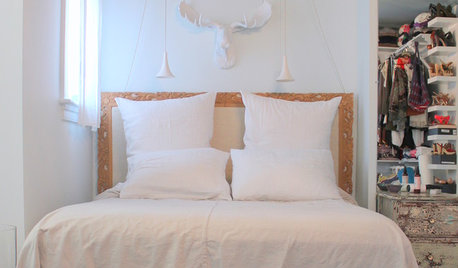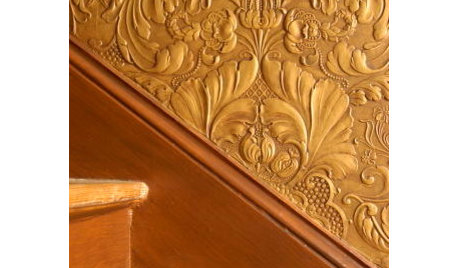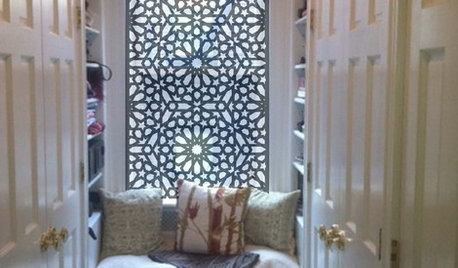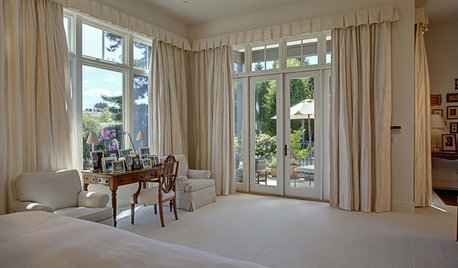Laser treatments (blemishes, hair, etc) - at home? Coming soon!
Just found this one. This oughta be good!
Lasers hit home
Hand-held devices to treat hair loss, acne and wrinkles bypass the dermatologist's office. But will claims match consumers' high expectations?
By Shari Roan
Times Staff Writer
July 2, 2007
LAURA BEARD was flipping through a women's magazine when an advertisement caught her eye. It sounded simple enough: Aim a laser at individual blemishes in the privacy of one's home  and the skin will clear up within a day or two.
The cost, $150, gave her only slight pause. If the device worked, it would save her the time and money she spent on acne treatments and dermatologist visits for herself and her daughter. "I have very dry skin, so I have to be careful about using acne remedies with benzoyl peroxide," says the 53-year-old Memphis woman. "This sounded so positive."
With the evolution of laser technology, do-it-yourself personal care has entered a new realm. Consumers can now calm acne flare-ups, plump facial wrinkles and restore thinning hair with a variety of hand-held devices. Others in development could treat superficial wounds, relieve pain and remove body hair.
"This field will grow because we have discovered how to channel the power of light and cause reactions in the skin and hair," says John Carullo, director of marketing for Sunetics, manufacturer of a hair-regrowth device. "It's quite an exciting industry, and it's on the verge of exploding."
Home hair and skin appliances using lasers or, in some cases, heat, can spare consumers from tiresome trips to the doctor's office and may be less costly, over time, than monthly in-office facials and hair treatments. But they won't work the same kind of magic that can be conjured up with more high-powered tools. And some may even be a waste of money.
"It's a matter of degree," says Dr. Harold Brody, a clinical professor of dermatology at Emory University in Atlanta. "If people are trying to treat mild conditions, it may help. But if it's something severe, they will need the help of a dermatologist."
The popularity of in-home treatments mirrors the use of medical devices by physicians, says Dr. Wendy E. Roberts, a Rancho Mirage dermatologist and assistant professor of medicine at Loma Linda University Medical Center. "I think eventually these could be effective for home use," she says. "But right now, there are questions about the efficacy of some of these systems. There's a lot of hype."
Consumers may have especially high expectations for home lasers.
Lasers release a special form of light in a single wavelength; by contrast, normal daylight consists of varying wavelengths. Hot lasers, the kind used by health professionals in the treatment of skin resurfacing and tattoo removal, are high-energy devices that cause heat damage to the skin, triggering a healing response.
Cool lasers are sometimes called low-level lasers or low-level light therapy. This type of laser doesn't damage tissue and is safe to use at home. They work by passing a beam of light through the skin to reach cells below the skin's surface and stimulate the body's natural healing processes. Energy produced by cool lasers appears to prompt the production of collagen and ATP (the energy source needed for cellular functions), promote blood circulation and boost the release of growth factors and the removal of waste products from cells.
"I sincerely doubt any of these things are so aggressive that they would produce side effects," says Brody. "But the effectiveness is going to be mild too."
Consumers may think that Food and Drug Administration clearance means the devices work similarly to those used by doctors. But FDA clearance of this type means only that the manufacturer has submitted some data showing effectiveness for the device's intended purpose. Usually this means the device is based on similar, proven technology. Devices that do not have FDA clearance may only be proven as safe.
For example, devices to stimulate hair regrowth for balding men have been sold over-the-counter for years although manufacturers couldn't claim the devices helped regrow hair. The approval in February for the HairMax LaserComb was a milestone because the manufacturer produced scientific data to show the product had some effect in growing hair.
But not every light-based hair and skin device has received FDA clearance.
"Consumers need to ask enough questions to make sure what they are getting is truly efficacious," says Dr. Mark Solomon, a plastic surgeon in Philadelphia and spokesman for the American Society of Plastic Surgeons. "Over-the-counter devices don't hurt anybody, so you can sell them. But that doesn't mean they work."
The American Cancer Society has warned that low-level light therapy products in particular are being touted for conditions for which there is little or no proof that they help, such as pain relief, inflammation, smoking cessation, herpes, high blood pressure and migraines.
But the devices are becoming more visible in the marketplace. Sunetics is marketing its laser hair brush for $399. Next month the firm will also begin selling the device with a removable head that can be replaced with one of four attachments (each costing $250) for use on acne, facial wrinkles, skin pigmentation and pain relief/wound healing. Each attachment contains a diode that produces a specific wavelength of light targeted to treat a particular condition, Carullo says.
Although there is some research supporting the effects of low-level laser therapy for hair regrowth and acne, there is little or no data to support other uses, Roberts says.
Consumers should seek a doctor's advice for persistent skin or hair problems, Brody says. A home device could lighten a skin lesion that is actually a melanoma skin cancer or remove scaling skin, the symptom of another type of skin cancer.
"Safety is paramount," he says. "You don't want to delay a diagnosis."
How do some of the home-spa devices stack up? Here's an appraisal:
--
Hair regrowth
About 55 million American men have some degree of hair loss, thus creating a potentially big market for an effective at-home treatment.
The HairMax LaserComb may be an option for men who don't want to pay for hair restoration surgery but who also don't have high expectations. It delivers a specific wavelength of light that stimulates the hair follicle, says its manufacturer, Lexington International.
In studies by the manufacturer, the device increased the number of thick hairs in 93% of 120 users. The average increase in hair density was 19 hairs per square centimeter  roughly a 20% improvement in someone with thinning hair.
The device costs $545 and must be used 10 to 15 minutes a day, three times a week to maintain the effect.
In contrast, laser hood treatments, which are available in clinics and cover the entire scalp, can cost hundreds of dollars per treatment and need to be repeated at least twice a week.
Hair transplants provide a more permanent solution but typically cost thousands of dollars. Topical medications, such as Rogaine, run about $10 per bottle for the generic but produce only modest results for some users.
The laser hair comb is not backed by randomized, controlled studies done by independent researchers, says Dr. Paul Cotterill, president of the International Society of Hair Restoration Surgery. The device may be best suited for men who are serious about hair regrowth, such as those who undergo hair transplantation and want to augment the result at home, he says.
"This new laser comb won't hurt, and it may help at maintaining hair," Cotterill says. "But I want to see third-party studies  studies that have not been done by the people who produced it."
Other laser hair regrowth devices are on the market but haven't received FDA clearance to make claims of effectiveness. Sunetics, which sells the Laser Hair Brush, is applying for FDA clearance, Carullo says.
--
Acne treatment
The two home-based acne devices on the market  ThermaClear and Zeno  are not meant to help prevent acne or improve chronic acne, but simply to treat existing blemishes. Both are based on laser technology used by dermatologists and use controlled bursts of heat.
"Unlike topical products, the heat device is able to penetrate the layers of the skin," says Peter Scocimara, chief executive of Therative, which makes ThermaClear. "This will not prevent the onset of new acne lesions. People still need comprehensive therapy."
Most dermatologists think the devices are handy for people who want to treat the occasional, untimely pimple. The burst of heat, which isn't painful, destroys the bacteria in the pimple and helps the skin heal faster.
Zeno, the first device to receive FDA clearance, in 2005, clears 90% of blemishes in 24 to 48 hours, according to its manufacturer, Houston-based Tyrell Inc. ThermaClear will heal acne two to four times faster than normal (normal varies among individuals) than if left untreated, according to its manufacturer, Therative in Livermore, Calif. The devices don't work on blackheads, whiteheads or cystic acne.
Both Zeno and ThermaClear cost about $150. No studies have been done comparing the devices with topical or oral acne treatments.
Beard says she uses ThermaClear about once a week to speed up the removal of a blemish or two. However, her teenage daughter Kelli has chronic acne and will see a dermatologist on a regular basis.
"I think this device is for those of us who don't have a severe case but still don't want to have to deal with acne," Beard says.
--
Skin rejuvenation
RejuvaWand, which purports to soften facial wrinkles, sends red and infrared light into the skin in four-minute treatments. The device, which became available in February for $200, is designed to stimulate cellular production of collagen, plumping up wrinkles and thin skin.
RejuvaWand has not received FDA clearance although the manufacturer, Light Dimensions in Palo Alto, Calif., has applied for the designation.
The company recently announced the conclusions of its own clinical study of 36 women showing that 67% reported an overall average improvement of 13% in facial wrinkles and skin texture.
The improvements increased slightly after 60 days of use. The device must be used daily for 60 days and twice a week thereafter to maintain the effects.
"If you look at what we're doing  a nonthermal, nondestructive type of energy applied to the skin  we're getting a statistically significant amount of improvement," says Dr. Leonardo Rasi, a laser surgeon in Redlands, Calif., who performed the study under contract with Light Dimensions but who has no other financial ties to the company.
But, he says, "this is not going to replace all doctors' lasers and light treatments."
Other doctors are dubious. In-office treatments, such as laser treatments, filler injections and face-lifts, can be painful and costly  ranging from about $500 to thousands of dollars  but produce results that are substantial and predictable.
The small amount of improvement cited in the RejuvaWand study may not impress consumers any more than the results they get from over-the-counter skin creams.
"Theoretically, this could work," Roberts says. But, she says, more detailed studies are needed.
--
Hair removal
Professional laser hair removal is a $2.7-billion dollar business, and makers of home devices hope to tap into the market. In December, the FDA cleared a home device from Gillette, but the device won't be available this year.
"We are not going to launch something until we are 100% satisfied with everything about the device," says Kelly Vanasse, a spokeswoman for Gillette. "We're still working on it."
The concept behind laser hair removal is that light emitted from the device is absorbed by the dark pigment in the hair follicle. The energy is converted to heat, causing the hair to fall out in a couple of days. Repeated treatments are needed to target the hair follicles in their various stages of growth.
Some data suggest that the hair that grows back is lighter and finer, but it's not clear how often the hand-held device will have to be used.
Professional laser hair removal treatments can cost $300 or more per treatment (several are needed), but can eventually eliminate shaving.
A Pleasanton, Calif., company called SpectraGenics is already selling a home-use laser hair removal device outside the country. The company is seeking FDA clearance to sell the device in the United States, says Robert Grove, president of SpectraGenics.
"Laser hair removal in an office setting is an enormously successful enterprise," he says. "The convenience of doing laser hair removal at home we think will be of great interest."
--
--------------------------------------------------------------------------------
shari.roan@latimes.com













kathya
marys1000
Related Discussions
Facial Hair from upper lip
Q
dealing with chin hair
Q
Chin Hair (unwanted)
Q
Advice on pet hair and vacuums
Q